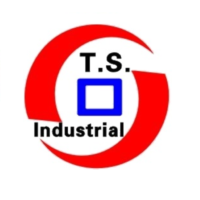High Flux Tube, High Flux Tubes, High Flux Heat Exchange Tube
USD $50 - $3000 /Piece
Min.Order:100 Pieces
Quick Details View All >
Shanghai T.S. Industrial Co., Ltd
Product Details
A high flux tube is a new product combining sintered method and machining technology. They can improve the heat transfer coefficient of the inside and outside tubes, thus they can significantly improve the overall heat transfer coefficient of tubes. They solve the current problem that the heat transfer coefficient increased only on one side of heat transfer enhancement, while the total heat transfer efficiency is still low. They greatly improve the efficiency of the heat transfer tubes and heat exchangers.
Sintered high flux tube is a highly efficient heat exchange tube with a specific structure on the surface of an ordinary heat exchange tube, which is sintered by the powder metallurgy method. The concave hole of the surface porous layer is communicated with each other, and the boiling heat transfer can be enhanced obviously, and the heat transfer effect can be increased by more than 20 times. This is so far for the heat transfer coefficient of the highest pipe type heat transfer element, especially applicable to alkanes, alkenes, and alcohols, such as Freon medium.
Compared with the bare tube, the sintered surface porous tube has the following advantages:
(1) it can significantly enhance the boiling heat, reduce the heat transfer area by about half, and have broad application prospects in the chemical and petrochemical plants such as large ethylene and large aromatics.
(2) in a very small difference in the maintenance of boiling, low taste energy recovery and low temperature boiling heat transfer have a great value and can be used to reduce the temperature of the heating steam.
(3) the critical heat load is more than 50% higher than that of the ordinary pipe.
(4) has good scale inhibition performance.
On the one hand, a High flux tube can reduce the steam demand. On the other hand, it can improve heat transfer capability. In a large heat transfer system, because of the need for small temperature differences, the number of reboilers needed is very large. The use of a High flux tube can reduce 3/4 the number of reboilers, and the temperature difference ΔT needed for only 5 ℃. Using High flux tubes to replace traditional bare tubes we can eliminate heat transfer bottlenecks, meet the need for a larger heat transfer load, and significantly increase production. At the same time, while keeping machine efficiency, it can reduce costs by using lower steam pressure.
The case-hardened products are as follows:
Sintered porous coating for the outer surface/low fins for the inner surface, Cannelure for the outer surface/ sintered porous coating for the inner surface, Sawtooth surface for the outer surface/ sintered porous coating for the inner surface, fins for the outer surface/ sintered porous coating for the inner surface.
Material: carbon steel, Aluminum, and so on.
Size: external diameter 15~40mm,length 500~12000 mm
Under normal conditions, the middle of the High flux tube is a strengthened section. Plane ends are smooth, so it is easy to wear and to be expanded. High flux tubes can do OEM as customers need. Products are packed in wooden boxes.
Applicable medium of high flux heat exchangers:
Ethylene glycol, diethylene glycol, ethylene trichloride, ethane, propylene, and ethyl alcohol.
Applications of high flux heat exchangers:
The high flux heat exchangers can be used in phase change equipment, such as carburetors, evaporators, condensers, reboiler, etc. To be specific, such as the ethylene carburetor, the overhead condenser, and reboiler of the ethylene separation device, the combination plant of ethylene glycol evaporation, and the aromatic, main condenser-evaporator of the air separation unit. As well as natural gas liquefaction, cryogenic refrigeration, air separation, seawater desalination, etc.
(1) Oil refining and petrochemical installations
Such as overhead condenser and reboiler of ethylene separation device, ethylene carburetor, catalytic slurry oil evaporator, ethanol evaporator, and ethylene glycol evaporator, etc. It can reduce more than 80% heat transfer area, and can also lower refrigerator horsepower. In the long-term operation process, the porous surface with enhanced boiling heat transfer is very stable, and no coking or scaling phenomenon has occurred. At the same time, it can greatly reduce heat medium consumption, so far as to lower the heat medium temperature.
(2) Natural gas purification and separation devices
For example, in the reboiler condensers of cryogenic air separation plants. On the one hand, it can reduce the initial cost of evaporation-condensing (cooling) heat exchanger (cut down heat transfer surface); On the other hand, because of the small work temperature difference, it can reduce power consumption.
(3) Seawater desalination and waste heat utilization
Contact Supplier

You May Like


New Products
Popular Searches
Recommended Products
Find Similar Products By Category